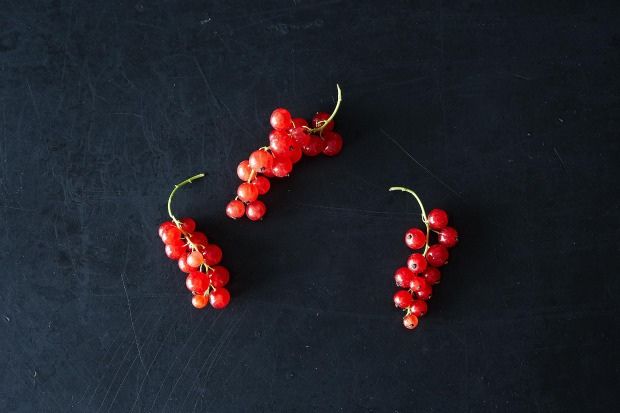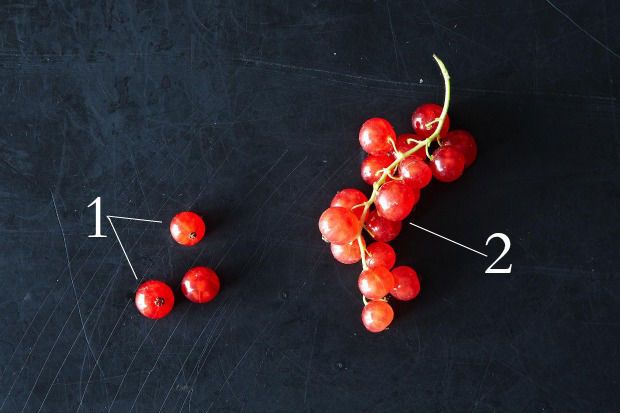Every week we get Down & Dirty, in which we break down our favorite unique seasonal fruits, vegetables, and more.
Today: red currants are closely related to gooseberries, hang in clusters called strigs, and are almost too pretty to eat. Almost.

Currants just look fancy. Perhaps it’s not a coincidence, then, that they are used in the world’s most expensive fruit preserve, la confiture de Groseilles de Bar-le-Duc, made in France. For each jar, the currants are painstakingly hand-seeded with a feather quill (yes, really) to maintain the berries’ shape and consistency. The resulting jam is stunning, the suspended tiny translucent berries look like oversized jewel-toned caviar. You won't need a quill or an entire afternoon to enjoy currants at home, though -- we promise.
Currant Confusion
White currants aren’t a different fruit -- they’re classified as the same species as red currants, just a colorless cultivar. Blackcurrants, on the other hand, aren’t simply a darker version of the same berry. They're in the same family, but an entirely different species. Dried currants are especially perplexing, as those actually aren’t currants at all: they’re small dried grapes called Zante currants. With that straightened out, now’s the time to look for currants at a farmers market near you.
More: Not sure where the nearest farmers market is? Find one on Real Time Farms.

How to Store and Prep
Currants don't last long, so use them within a few days and always wait to wash them until you're ready to use them. To maximize their shelf life, Elizabeth Schneider recommends storing them in the refrigerator, spread out in a single layer on top of a dish or tray lined with paper towels. No need for topping and tailing with currants -- the individual berries (1) can be used whole, once you’ve separated them from the strig (2). To do this, either gently pull the berries off one at a time, or rake through the clusters with the tines of a fork if you aren’t opposed to a few crushed berries.

How to Use
Like gooseberries, red currants are often used in desserts. Try them in a crumble, a tart, or a pie. Turn them into a sorbet or swirl them into ice cream. Have you ever enjoyed frozen grapes on a hot summer day? You can do with same thing with red currants. Add them to cakes and muffins, but don’t limit yourself to sweet applications -- use red currants in a salad, salad dressing, or a chutney. If you're a little more adventurous, eat them with a roasted loin of deer and chestnuts. Pop a few berries (or a tiny strig) in a beverage for a refreshing splash of color and get ready to enjoy red (and white) currants all week long:
Friday: Vanilla Panna Cotta with Red Currant and Raspberry Coulis
Saturday: Red Currant Jam (No quill feather de-seeding required.)
Sunday: White Currant Tart
Monday: Red Currant Samosas with Maple Syrup Custard
Tuesday: Red, White, and Blue Quinoa Berry Salad
Wednesday: White Currant and Whisky Semifreddo
Thursday: Lemongrass Vanilla Almond Poppyseed Red Currant Teacake
Photos by James Ransom




See what other Food52 readers are saying.